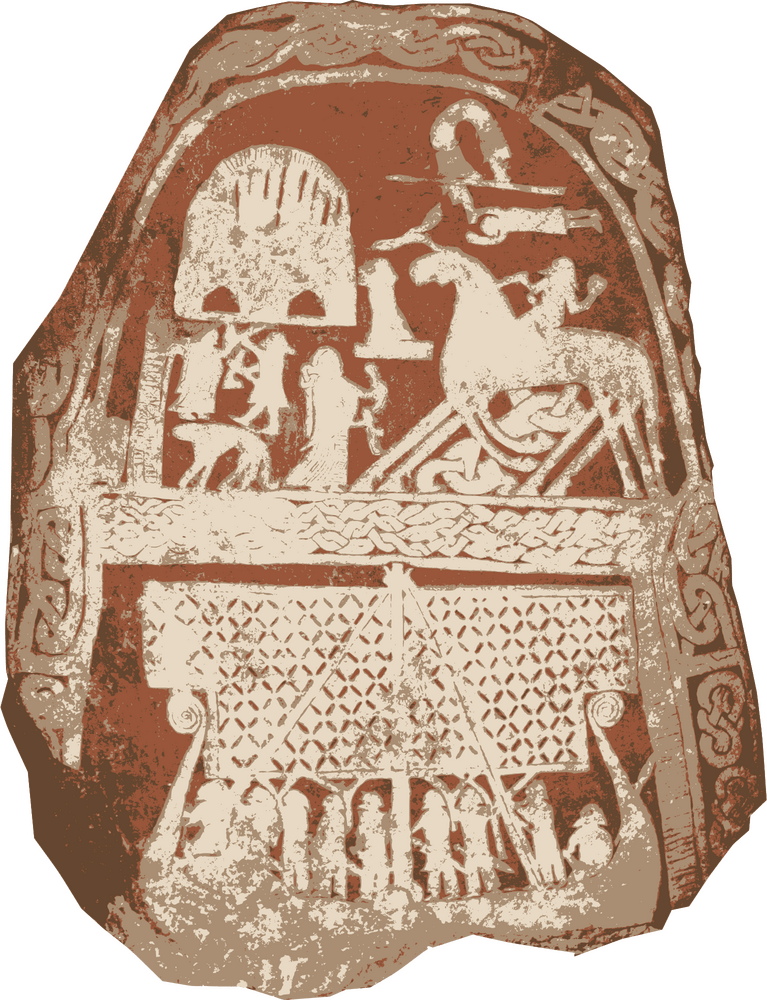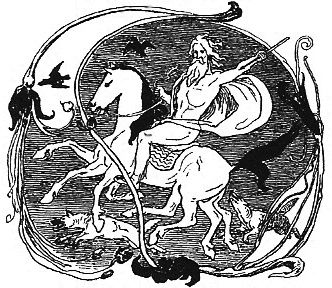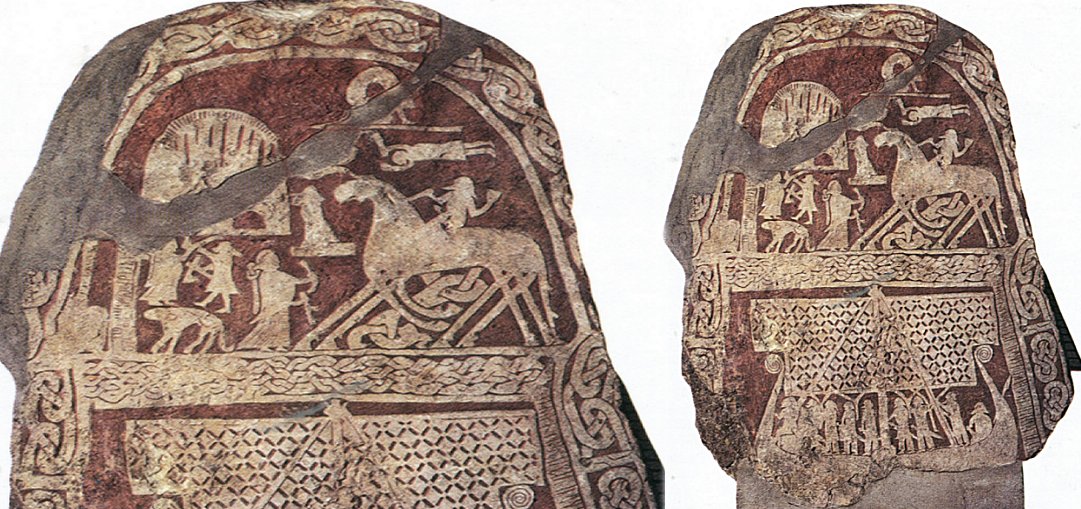In Norse mythology, Sleipnir was the god Odin's magical horse. This horse had eight legs and runes carved onto his teeth. He was so powerful that he could outrun any horse in the nine realms, fly through the air, and run across the sea.
How Do You Pronounce Sleipnir?
It is pronounced “slayp-nir” with the stress on the first syllable.
Sleipnir means “The Slipper” or “Slippy” in Old Norse. Some works and articles translate his name as “the one who slides.”
What is Sleipnir the God of?
Sleipnir was not a god, but he did belong to one – Odin, the supreme god of all Norse mythology.
He was “the best horse among gods and men,” according to the Prose Edda.
Is Sleipnir Male or Female?
Although there does not seem to be much evidence indicating Sleipnir is a male, there is none to suggest the animal is female.
Strangely, Sleipnir was born of Loki after the mischievous god had to resort to trickery to extricate himself from a tricky situation.
His fellow pantheon had decided he was responsible for them agreeing to compensate a builder who Loki had seemingly set the impossible task of completing the fortification of Asgard in less than one season.
What Color is Sleipnir?
The Prose Edda contains detailed information concerning Sleipnir, including the background to his birth and a description of his coat being grey in color.
Two ancient carved stones contain images of an eight-legged horse. Their reproductions in print or digitally usually depict the horse as being gray.
The Tjängvide Image Stone
The Tjängvide image stone is a Viking Age relic in Tjängvide, about 1½ miles west of Ljugarn in the province of Gotland, Sweden’s largest island. The stone is divided into an upper and a lower section, separated by a line of valknuts (a symbol of three interlocked triangles).
The upper portion contains an engraving of a woman offering a drinking horn to a rider on a large, gray eight-legged horse.
One interpretation is that the rider is Odin and the horse Sleipnir. However, some analysts believe the rider is a dead Einheri that Sleipnir is carrying to Valhalla, and so the woman could be a Valkyrie.
The Swedish Museum of National Antiquities uses the rider’s image on the horse as its official logo.

The Ardre Stones
Sleipnir also features on one of the Ardre stones, a set of 10 tablets displaying runes and images dating back to the 10th century. Builders found the stones during the restoration of a church in Ardre (also on Gotland) at the beginning of the 20th century.
Ardre VIII, the largest of the stones and the best-known, depicts some scenes from Norse history., including Thor fishing for Jörmungandr, the tale of Wayland the Blacksmith, and Loki’s punishment for the death of Baldr.
The remaining image occupies the most prominent position at the top of the stone and is the one that will interest us most. It depicts Sleipnir taking Odin to Valhalla – his eight legs clearly visible.
Why Does Sleipnir Have Eight Legs?
Sleipnir’s additional legs grew out of its shoulders and haunches. The extra legs made him stronger, faster, and more powerful than any other horse in the nine realms. He was also valiant and, very importantly, able to transport Odin in and out of Hel, the land of the dead.
The Marvel Universe depicts Sleipnir as possessing colossal strength, able to pull 10 tons and lift two tons. He can fly and run at the speed of light for long periods.
What Does Sleipnir Symbolize?
Sleipnir could bear his riders across the nine realms of Norse mythology. His legs symbolize speed, eternal life, power, strength, perception, transcendence, and travel.

In modern advertising, Sleipnir is often used to symbolize athletic prowess. He also represents support and guidance for those who need enlightenment and protection.
Sleipnir appeared briefly in the first “Thor” movie. Some people believe that Sleipnir’s eight legs might be why Santa Claus has eight reindeer pulling his sleigh.
In Norse mythology, children of the nine realms used to leave hay for Sleipnir when he took Odin to distribute gifts to them. A clear parallel to Santa Claus’ duties at Christmas.
The story of how Sleipnir was born
We have talked briefly about how Loki was responsible for bringing Sleipnir into the world, but the whole story is worth investigating.
A builder (his name is not divulged) visited Valhalla in the early days of its existence. He had noticed that Asgard lacked proper fortification and was vulnerable to attack from the many foes that inhabited the nine realms, especially giants.
He proposed the construction of a citadel around the city in three seasons, but his demands were steep. The man demanded the gods present him not only with the sun and moon but also the hand in marriage of the goddess Freyja.
The gods decreed these requests unreasonable but did decide that they would meet his demands if he completed the work in just one season without the help of any other man and that the walls were so strong and high that not even giants or trolls could scale them. The builder agreed to this on the condition he could use his stallion, Svadilfari, to help.
Loki Up To His Tricks
Although at first the gods were not prepared to accept these terms, Loki, for reasons unknown, persuaded them that the man would not be able to keep his end of the bargain, and the construction went ahead.
Work commenced on the first day of winter and made excellent progress thanks to the efforts of the giant stallion and the builder. The horse hauled the massive rocks into place with such speed that it looked like the building would be completed three days before summer started. The structure looked impregnable, every bit as strong as the gods had demanded.
Afraid of losing Freyja and having their world plunged into darkness, the gods called a council to decide how they could avoid giving the man what he had requested. While debating, they remembered that the trickster god Loki had been the one to convince them to accept the builder’s demands.
They ordered Loki to swear an oath to prevent the work from being completed in time. They threatened him with torture and death if he failed to achieve this.
Unbeknown to the gods, Loki took the form of a mare in heat and emerged from a forest close by where the builder and Svadilfari were camped one evening. The mare called to the stallion, who broke his bridle and halter and chased her into the woods in a fit of lust and infatuation.
The horses ran together through the forests and mountains through the night, during which the stallion impregnated the mare.
The Jötunn Revealed
The builder became enraged at the horse’s absence as he could not finish the citadel in time. Such was his fury; it became apparent to the gods that the man was, in fact, a jötunn (a supernatural being or giant).
Realizing the jötunn had fooled them by concealing his identity, they sent for Thor to go and confront the giant. Thor killed the jötunn instantly with a blow to the head from Mjölnir, his magical hammer. Thor swung Mjölnir with such force that it sent the giant all the way to Niflheim and scattered pieces of his skull across the nine realms.
Loki then revealed himself to the gods as the mare that had successfully distracted Svadilfari. It further transpired that Loki had become pregnant with the stallion’s offspring, and he gave birth to Sleipnir, a gray horse with eight legs.
He was considered the finest horse in the nine realms and a fitting gift for Odin, the leader of the pantheon.

